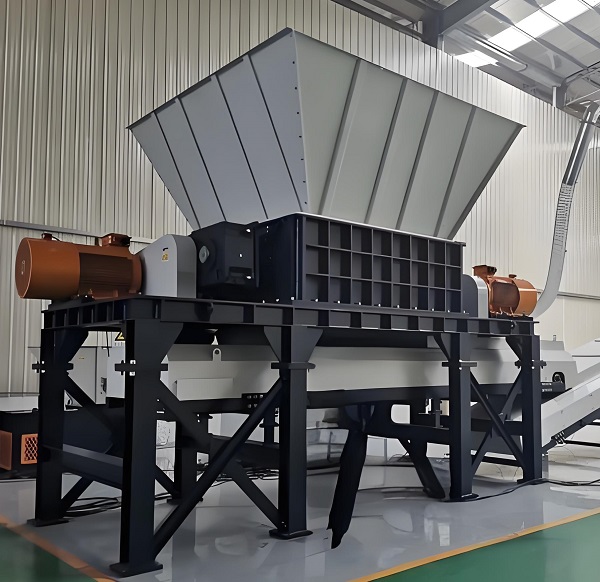
The twin-shaft shredder is an efficient and reliable material handling equipment, widely used in the crushing of waste plastics, rubber, metal, wood, etc. It adopts a twin-shaft design and is equipped with highly wear-resistant blades. Through low-speed, high-torque rotation, it can effectively shred the material into uniform particles.
A twin-shaft shredder is a highly efficient industrial equipment widely used for the shredding and recycling of waste materials. Compared to single-shaft shredders, twin-shaft shredders feature two independently rotating, symmetrical shafts. This design allows them to more evenly process a wide range of materials, particularly hard and tough items. Its core operating principle is to use low-speed, high-torque rotation to trap material between blades, where it is broken into desired particles through a combination of tearing, shearing, and crushing. Twin-shaft shredders are suitable for processing a variety of waste materials, including plastics, rubber, wood, metal, and electronic waste, and are particularly well-suited for materials that are large, irregular, or contain metallic impurities. They feature a sturdy structure, smooth operation, and easy operation. Due to their lower speed, twin-shaft shredders produce less noise than single-shaft shredders, making them suitable for use in environments with strict environmental protection requirements. Twin-shaft shredders offer high efficiency, low energy consumption, and wear-resistant blades, significantly improving resource recovery rates. They are essential equipment for waste material processing, environmental protection, and resource recycling.
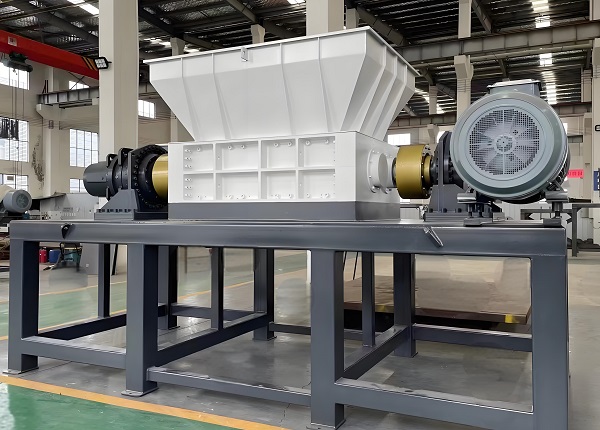
When choosing a twin-shaft shredder, the first thing to consider is the material type. Different materials, such as plastic, rubber, metal, or wood, place varying demands on the machine. Ensure the blade material and structural design are suitable for the hardness, toughness, and impurity content of the material being processed. Understanding the characteristics of the target material and choosing a specifically designed model can improve the machine's efficiency and lifespan.
Choosing the Right Power and Processing Capacity. Power and processing capacity are key factors for a twin-shaft shredder. Select an appropriate power range and hourly processing capacity based on production needs. Higher power generally means higher processing capacity and shredding efficiency. For smaller volumes, a lower power model can be selected. Consider the equipment's daily load and ensure its maximum processing capacity meets actual production needs.
Blade Material and Durability. The blade material directly impacts the shredder's performance and durability. Choosing blades made of alloy steel or high-hardness steel ensures they remain sharp and wear-resistant over extended periods of operation, reducing the need for frequent blade replacements. High-quality blades enhance shredding performance, particularly when processing hard or tough materials.
Consider the machine's safety and ease of operation. When purchasing a twin-shaft shredder, pay attention to its safety features, such as protective devices and emergency stop functions. Furthermore, the simplicity of the user interface is crucial; the machine should have an easy-to-understand and easy-to-use control system. A good user interface and intuitive operation process can reduce training time and operator errors, thereby improving overall production efficiency.
Maintenance and Ease The ease of daily maintenance and upkeep of the equipment determines its long-term operational stability. Choosing a dual-shaft shredder that's easy to clean and maintain can reduce downtime and maintenance costs. High-quality equipment .typically features easily replaceable blades, filtration systems, and lubrication systems, significantly reducing equipment failure rates and repair complexity.
Brand and After-Sales Service. Choosing a reputable twin-shaft shredder generally guarantees quality. These brands often offer comprehensive after-sales service, including installation and commissioning, technical support, and repair services. By understanding the manufacturer's after-sales service policies and user reviews, you can ensure timely support and service throughout your equipment's life, enhancing your user experience and ensuring its long-term operation.
Its sturdy and durable structural design and high-quality materials. Using high-strength steel and wear-resistant blades, it ensures long-term efficient operation. The low-speed, high-torque working mode effectively reduces mechanical wear and extends service life.
Flexible configuration options allow for customization based on specific customer needs, including feed size, blade design, processing capacity, and power configuration, allowing the equipment to be optimized based on the characteristics of different materials.
Powerful processing capacity and efficient shredding effect. Through low-speed and high-torque operation, it can stably and efficiently process hard and tough materials, ensuring uniform crushing.
The twin-shaft shredder features high efficiency, low noise, and low energy consumption. Its dual-shaft design evenly distributes force on the material, making it suitable for shredding hard and tough materials. It is particularly suitable for shredding waste plastics, rubber, and metal. The equipment is stable, easy to operate, and the blades are made of wear-resistant material, ensuring low maintenance costs.
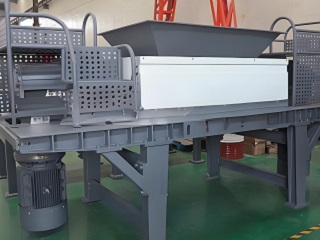
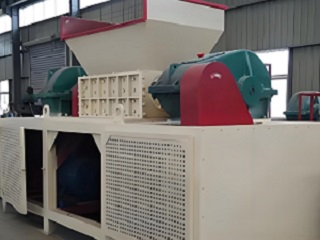

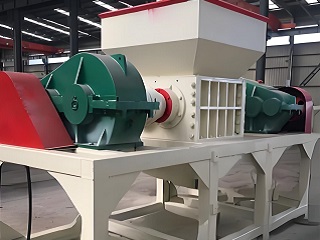
The working principle of a twin-shaft shredder is based on its dual-shaft design. It uses two independently rotating shafts and interlaced blades to tear, shear, and crush materials. During operation, material enters the machine through the feed inlet. The blades on the two rotating shafts rotate at low speed and high torque, using powerful shear and compression forces to shred the material into small pieces. The dual-shaft design ensures that once the material enters the shredder, it is alternately gripped and cut by the two blades multiple times, ensuring uniform shredding.
Unlike single-shaft shredders, twin-shaft shredders offer higher processing capacity and are particularly suitable for hard, tough, or impure waste materials such as scrap plastics, rubber, metal, and electronic waste. Their low speed operation reduces energy consumption and noise levels, further enhancing environmental compliance.
The blades of twin-shaft shredders are typically made of high-strength steel or alloy, offering high wear resistance and maintaining excellent cutting performance over extended periods of operation. The stability and high efficiency of these shredders have made them widely used in resource recovery and waste disposal. In short, the double-shaft shredder can effectively handle a variety of difficult-to-crush materials through precise design and powerful shearing force, achieving efficient and safe material processing.

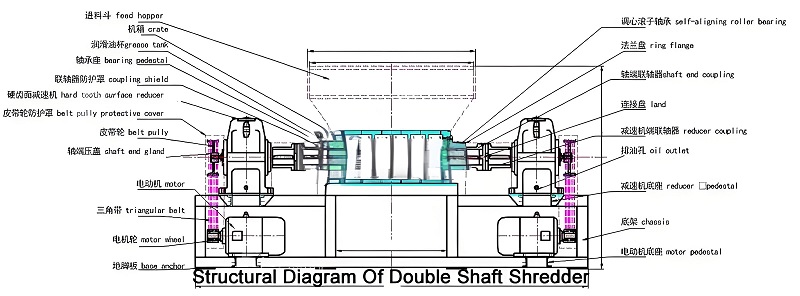
| Model | Feed Opening Size | Power | Speed | Capacity | Blade Material | Weight | Dimensions |
|---|---|---|---|---|---|---|---|
| SHRED-1000 | 500 x 500 mm | 15 kW | 25 RPM | 500-1000 kg/h | Alloy Steel | 1200 kg | 2000 x 1200 x 2200 mm |
| SHRED-1500 | 600 x 600 mm | 18 kW | 22 RPM | 1000-1500 kg/h | Alloy Steel | 1500 kg | 2200 x 1300 x 2400 mm |
| SHRED-2000 | 800 x 800 mm | 22 kW | 20 RPM | 1500-2000 kg/h | High Strength Steel | 1800 kg | 2500 x 1400 x 2500 mm |
| SHRED-2500 | 1000 x 1000 mm | 30 kW | 18 RPM | 2000-2500 kg/h | Tungsten Steel Alloy | 2000 kg | 2800 x 1600 x 2700 mm |
| SHRED-3000 | 1200 x 1200 mm | 37 kW | 15 RPM | 2500-3000 kg/h | Tungsten Steel Alloy | 2500 kg | 3000 x 1700 x 3000 mm |
| SHRED-4000 | 1500 x 1500 mm | 45 kW | 12 RPM | 3000-4000 kg/h | High Hardness Steel | 3000 kg | 3500 x 2000 x 3200 mm |
*The output will vary according to different materials, feed particle size and other factors.
Save Time! Get A Detailed Quotation Quickly.
